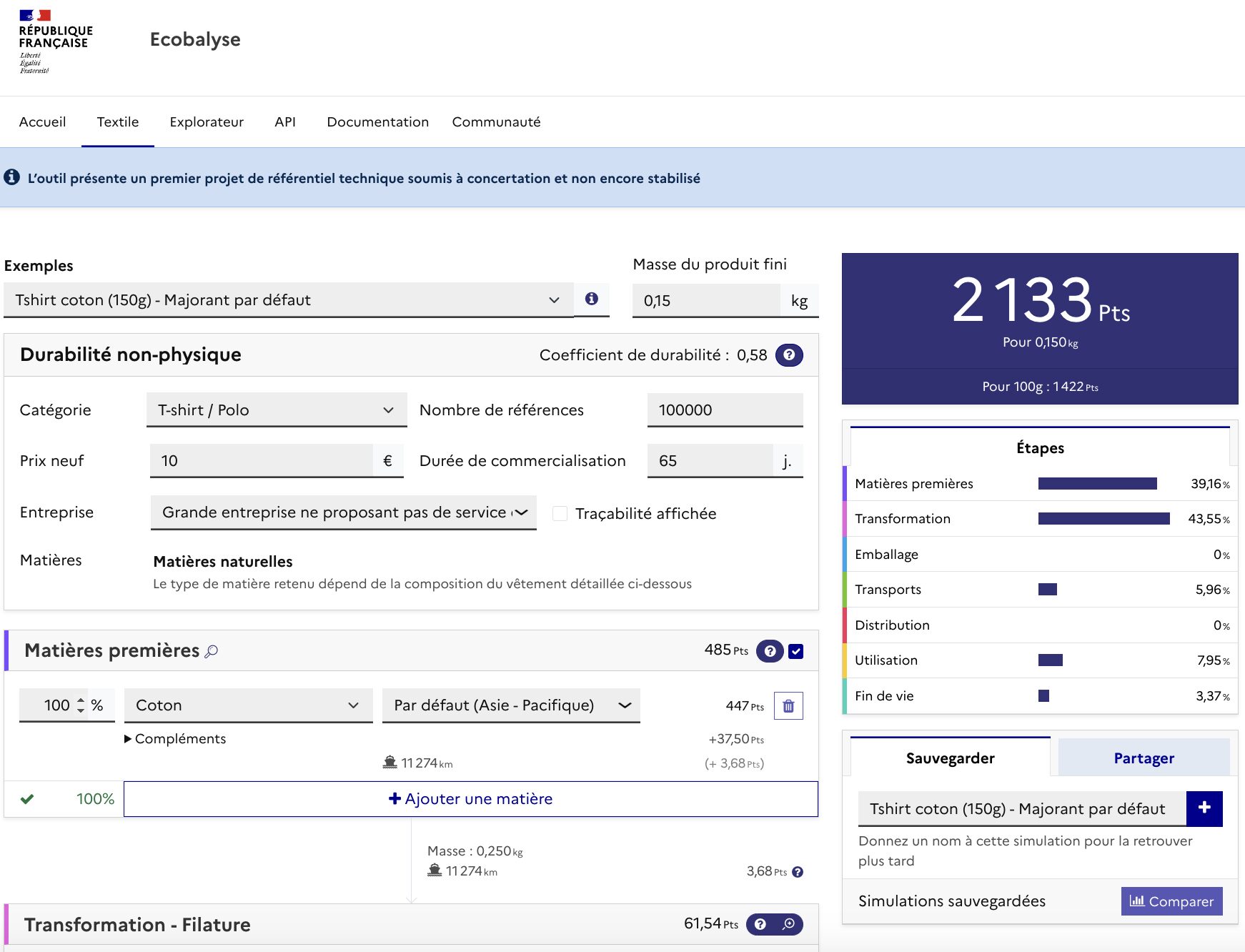When an item of clothing or a fashion accessory costs very little, it is often the planet that pays the hidden price. This is what ecobalysis, which the French government wants to launch with brands, aims to illustrate, initially on a voluntary basis.
What is ecobalisi, the clothing ecoscore?
The ecological transition agency ADEME has worked extensively on the issue with volunteer brands to create this tool to calculate the environmental cost of clothing and fashion accessories. It takes into account water consumption, the biodegradability of textiles, the use of pesticides and other chemicals, possible microplastic discharges, but also the production volume and frequency of renewal of collections.
#Fastfashion A label that calculates the ecological impact of new clothing items is being prepared. Ecobalisi, a tool to fight ultra-fast fashion? Answers by Julia Faure of the eco-responsible brand #chassis. pic.twitter.com/RRy2A1WMLp
— Jean-Christophe Galeazzi (@jcgaleazzi) April 4, 2024
This content is blocked because you have not accepted cookies and other trackers. This content is provided by Twitter.
To view it, you must accept the use made by Twitter with your data which may be used for the following purposes: to allow you to view and share content with social media, to promote the development and improvement of the products of Humanoid and its partners , show you personalized advertisements based on your profile and activity, define a personalized advertising profile, measure the performance of advertisements and content on this site and measure the audience of this site (more information)
Manage my choices
Ecobalysis summarizes the social and environmental impact of clothing using a points system
Concretely, the higher the ecobalysis score (expressed as a number from zero to infinity), the more the garment or fashion accessory will be considered polluting and/or socially irresponsible. So, a product that will have a very low financial price will perhaps, for example, have a very high ecological balance. A way to understand if an object costs the planet dearly or not.
Except that the calculation method promises to be complicated, given the lack of traceability of the brands on their production chain. So much so that this eco-test, which was supposed to become mandatory in 2023, will only start on a voluntary basis in 2025. The calculation tool is already available to the general public in beta version, in order to understand how it works and the impact of each variable on the total points.

Non-physical sustainability, raw materials, processing (spinning, weaving, knitting, finishing, packaging), distribution, use, end of life : these are the criteria that can more or less increase the eco-balisi score of our garments. This digital public service should finally make it possible to calculate the environmental cost of most products.
Behind the low prices, lies the true social and environmental cost of fashion
According to the Ministry of Ecological Transition, 2.8 billion items of clothing, accessories and household linen were placed on the market in 2021. In 2022 they will increase further: 3.3 billion. Enough to worry about this ever-increasing overproduction despite an awakening of conscience that French law intends to sanction against the ravages of fast fashion.
The time has therefore come to understand that the more clothes we sell, the more jobs we destroy, as demonstrated by the media crisis in fashion in France. And that recycling is not the best fight against waste in the textile sector, but rather sobriety.
The latest articles on
Fashion industry
-
“I want to be remembered for my style rather than my size”: Louise Parent, fashion journalist
-
Good fashion deal: These 2 brands (that we love) will significantly lower their prices
-
Why These Omôl African Artwork Sandals Might Make Your Feet Uncomfortable This Spring Summer
-
PFAS: in which clothes are these eternal pollutants that poison us found?
-
Victoria Beckham announces her fashion collaboration with this low-cost brand we love
-
Chanel’s Classique bag surpasses the symbolic threshold of 10 thousand euros: luxury price increases that reassure the ultra-rich
Do you like our articles? You’ll love our podcasts. All our series, urgently listen to here.
Source: Madmoizelle
Mary Crossley is an author at “The Fashion Vibes”. She is a seasoned journalist who is dedicated to delivering the latest news to her readers. With a keen sense of what’s important, Mary covers a wide range of topics, from politics to lifestyle and everything in between.




